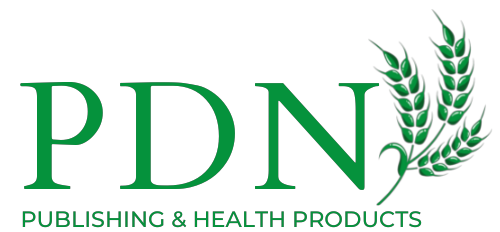Healthy Aging and Athletic Nutrition Celebrating 51 years of a plant based nutrition lifestyle

|
PDN Vegetarianism Energy/Endurance Healthy Aging Developed by Donald Thomas- 1977
|
|
*In 1978, Dr. Julian Whitaker wrote an article in Runner's World magazine, explaining how an Athlete would benefit from a diet with no more than 10% fat. More than 10% was found to produce a clumping of the red blood cells which decreased oxygen uptake, critical for athletic performance.
This 10% fat diet as a part of reversing/preventing disease is now recommended by such notables as Drs. Ornish, Shintani, McDougal and Bernard.
Realistically, the average person will find it difficult to stay on a 10% fat diet.The athlete in training and competition as well as persons involved in disease reversal should maintain this level.
In 1976, the Japanese received only 9% of their total food calories from fat, with only one-third of that fat being saturated. According to Japanese Health Ministry statistics as of 1988, the Japanese now receive 25% of their food calories from fat. Concomitantly, chronic degenerative diseases,for example, cardiovascular disease, diabetes, and neoplasm have increased to account for two-thirds of all deaths.They still however have some of the highest rates of longevity among nations.
Nutritionist Robin Hur observed that in countries where children ate a high tuber-based diet, they tended to be more muscular than in countries where children were fed grains as the main source of protein. The muscular diet of NJS is designed to produce an athlete with optimum body weight/fat for their athletic endeavor.
The primary sources of complex carbohydrates should come from tubers and root vegetables,legumes (cooked and sprouted), fruits (berries and melons), and sprouted whole grains/grasses rather than refined grains and simple sugars.
**Athletics that require high caloric expenditure both during training and competition (marathons, triathlons as well as professional athletes) may require 8,000 calories or more per day.Two and a half times ones basal metabolic rate appears to be the upper limit of how many calories the individual can digest.
"At age 50, you need 200 fewer calories a day than you did when you were 20, assuming you are equally active," according to Dr. Stacy Weiss, M.D. "After age 60, you need 400-500 calories less. If you're moderately active, up to age 50, around 2,000 calories a day is good. After 50, you need to decrease to 1,800 calories."
Jeet Kune Do Sports Nutrition
Jeet Kune Do favors formlessness so that it can assume all forms-Tao of Jeet Kune Do-Bruce Lee
Within The Tao of Jeet Kune Do, Master Lee postulated a sports nutrition program based upon Buildup and Breakdown as well as a muscular diet.
This concept mirrors the scientific principals of Anabolism (Buildup) (youthening) and Catabolism (Break down) biotrophy -aging.
Applying this principle to nutrition-PDN Vegetarianism accepts all forms of plant-based nutrition and is not limited to any one form. While Apiarian nutrition, lacto ovo vegetarianism and soy nutrition are recognized in PDN. Vegans and others who eschew these foods need not consume them to practice PDN Vegetarianism.
Soy Nutrition
Soy Milk, Miso, Natto, Tempeh, Beans, Oil, Flour, Bran, Lecithin, Okara,Yuba, Sprouts
Vege-Sproutarianism
- Sprouted Seeds, Grains and Beans
Mycology
Herbology
Scientific investigation of Herbal Sources of Vitamins, Minerals, Enzymes, Cell Salts, Plant Sterols, Adaptogens , Ergogenics, Nutraceuticals, Antioxidants, and Phytochemicals Brain Nutrition Herbal Sacraments
Tropical Vegetarianism
Tropical Fruit in season, Melons, Berries, Cherries, Apricots, Apples, Dehydrated Fruit, Citrus Peel Teas, Almonds, Macadamia Nuts, Walnuts,Cashews, Pistachios (raw and blanched), Nut and Seed Milks,Coconut Herbology, Apiarian Nutrition, Aqua Veganism, Liquidarianism
Liquidarianism
Thorough mastication, purees, soups, juices, teas, blended drinks, extracts, (coconut, cactus and distilled water, fermented and malted grains (alcohol in moderation), molasses, maple syrup, cold pressed cooking oils, nut and seed milks, glucose polymer drinks, vegetarian nutritional drink mixtures
Intestinal Biocultures
Pro-Biotics and Pre-Biotics
Muscular Diet Calorie Counter
Nutritionist Robin Hur observed that in countries where children ate a high tuber-based diet, they tended to be more muscular than in countries where children were fed grains as the main source of protein. The muscular diet of NJS is designed to produce an athlete with optimum body weight/fat for their athletic endeavor.
Vegetarian Nutritional Drink mixtures, Whey Protein, Colostrum, Tubers, Root Vegetables, Moringa,Sprouted whole Grains/grasses, Herbology, Apiarian Nutrition, Flower Pollen, Glucose Polymer drinks
- Protein recommendations
- 44-60 Grams/day Female
- 60-90 Grams/day Male
- 60%+ complex carbohydrates
- 15-25%-protein
- 10-25% fat
